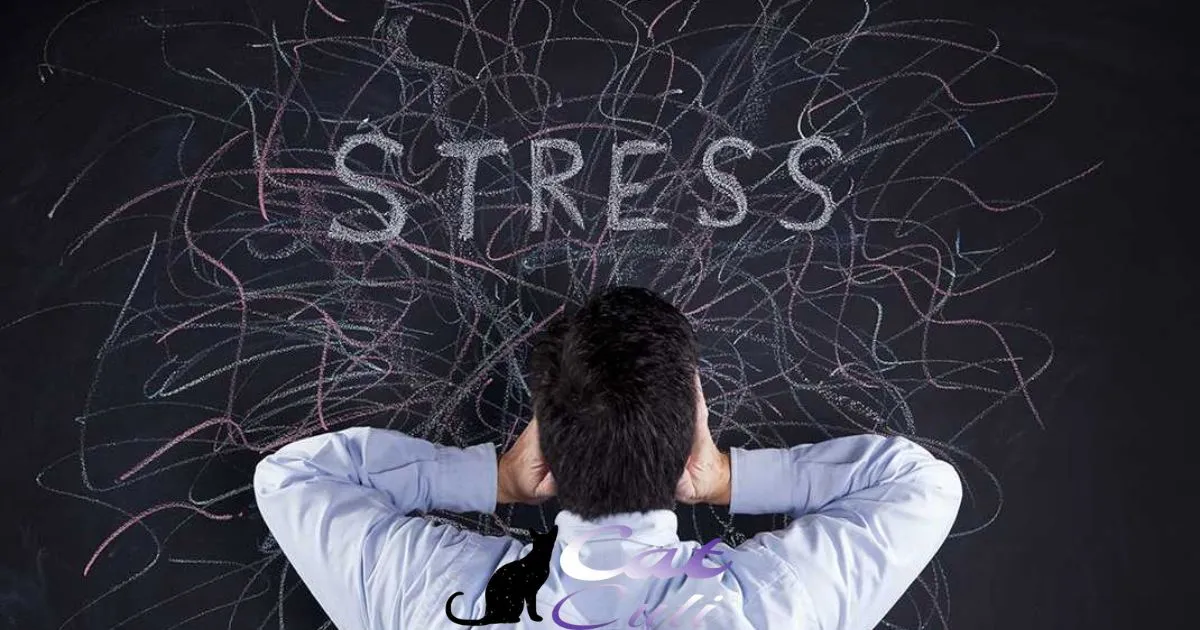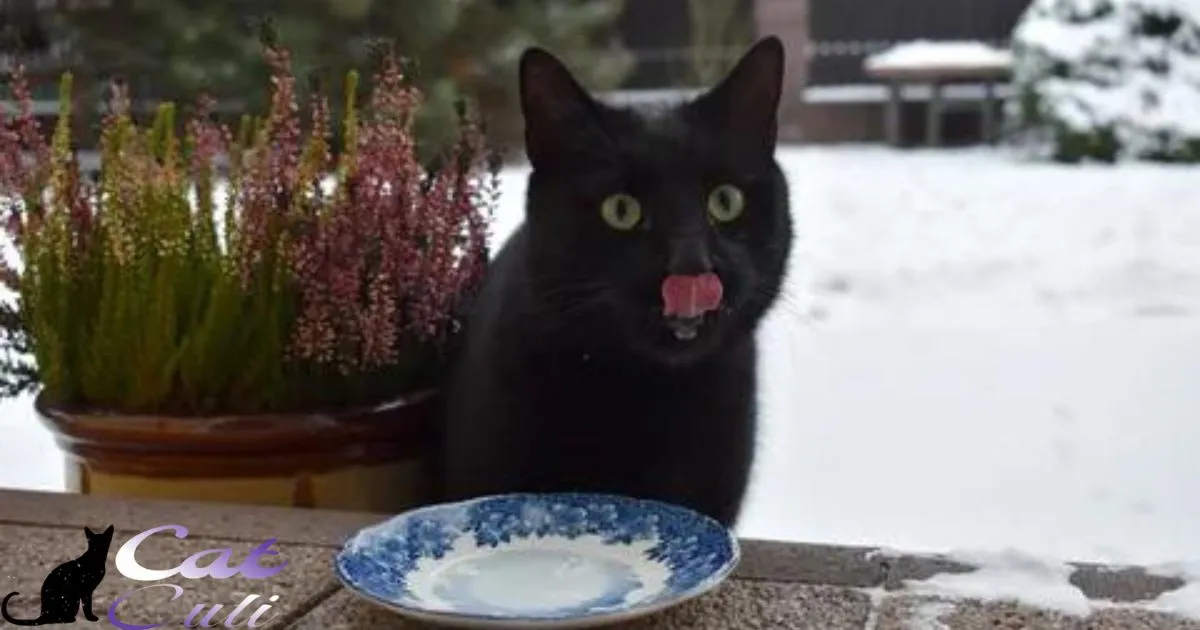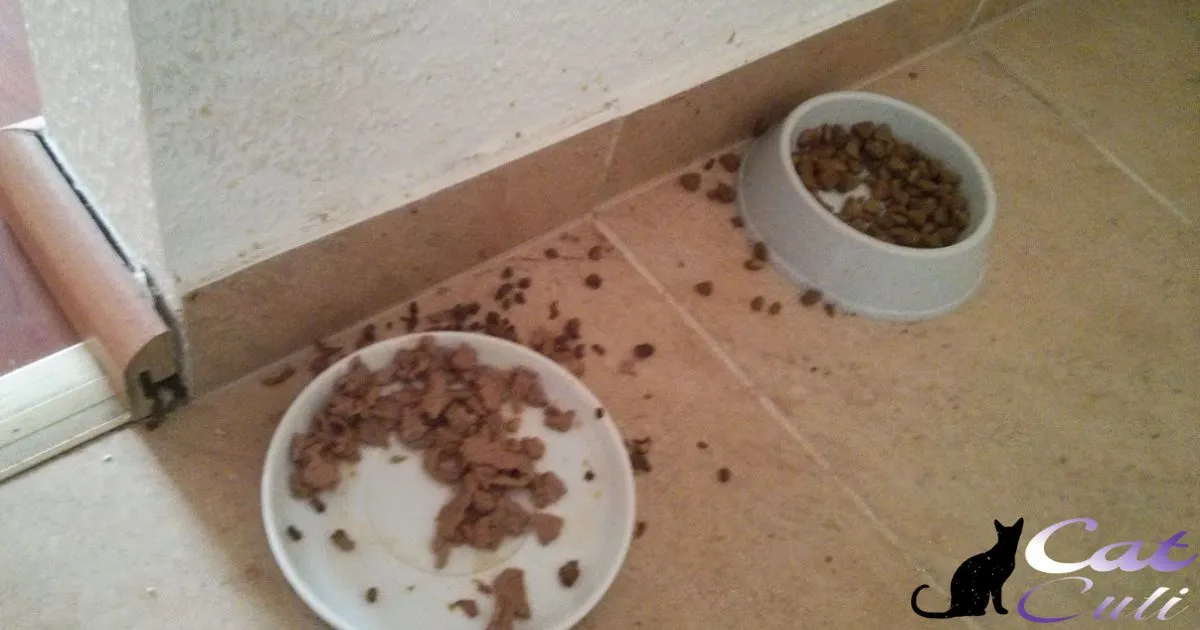Have you ever caught your cat delicately removing pieces of kibble or canned food from her bowl only to bat them around the floor? This peculiar behavior is quite common among cats yet the motivations behind it can be complex.
While it may look like innocent playtime, constantly taking food out of the bowl can create unnecessary mess and even pose a health hazard if your cat stops eating properly. Getting to the root cause requires analyzing key context clues like timing, location, body language and any correlation with diet changes.
In some cases, the bowl itself triggers the desire to take food out. Plastic materials, high sides, and proximity to walls can all infringe on your cat’s sensitive whiskers. For other cats, boredom and instinct drive playing with food for stimulation. There are also medical conditions that lead to picky eating habits.
Why Does My Cat Take Food Out Of A Bowl?
Have you ever caught your cat delicately removing pieces of kibble or canned food from her bowl only to bat them around the floor? This peculiar behavior is quite common among cats yet the motivations behind it can be complex.
While it may look like innocent playtime, constantly taking food out of the bowl can create unnecessary mess and even pose a health hazard if your cat stops eating properly. Getting to the root cause requires analyzing key context clues like timing, location, body language and any correlation with diet changes. Only then can you curb food removal in a way that keeps your cat content.
It Satisfies Her Primal Instincts
Cats are natural hunters driven by instinct to catch prey. This explains why many enjoy chasing toys and batting around balls. Taking food out of the bowl to “play” with taps into this primal need to mimic hunting behaviors.
Cats don’t see kibble or canned food the same way humans do. We simply provide sustenance but in their minds, each piece represents prey to be caught. This gives an activity many domestic cats sorely lack – using their innate skills.
Scooping food onto the floor or carrying it in their mouth to “kill” elsewhere brings great mental enrichment. It allows expressing natural behaviors passed down from ancestors.
She May Dislike The Food Bowl
It’s essential to pay attention to subtle cues from your feline companion. For instance, if you notice unusual behaviors like My Cat’s Pee Foamy, it could be an indicator that she is expressing discomfort or displeasure with her dining environment.
Irritating textures
Plastic bowls often have seams or textures displeasing to sensitive whiskers. Rubbing along the sides while eating proves unpleasant. Dumping food out removes this irritation.
High sides
Bowls with deep sides require awkward maneuvering to reach food at the bottom. Shallow, wide dishes allow easier access.
Tight spaces
Having the food bowl backed into a corner or placed under a table infringes on your cat’s space. Taking food to eat in the open brings security.
Unappealing materials
While stainless steel and ceramic appeal to humans, plastic or metal can impart unwanted smells and tastes to food. Glass, wood or stone may entice finicky eaters.
Static electricity
Plastic bowls tend to cause static, making fur stick up. This can spur removing food to reset fur lying flat.
Stress or Anxiety Drive It

Sudden bouts of food removal often correlate with changes in environment or routine known to cause cats stress. Introducing a new pet, moving homes, shifting work schedules – anything disrupting normalcy can manifest as acting out via food.
In the same way humans stress eat, cats may take extra interest in food when anxious. But instead of overeating, your cat plays with her meals to relieve nervous energy. Managing what little control she has over her surroundings – the food itself – brings reassurance.
Cat Keeps Knocking Food Out Of Bowl
Cats knock food out of bowls due to instinct, stress, medical issues, or dislike of the bowl. An under stimulated cat plays with food out of boredom. Knocking kibble around satisfies primal hunting urges.
Anxiety from changes in routine or owners leaving causes acting out. Dental disease prevents comfortably eating from bowls. And cats reject bowls that are too deep, small, or have unpleasant textures.
To curb food knocking, try more playtime, calming aids during stress, vet exams to treat illness, and bowls with low sides and pleasing materials. Ignoring the behavior and immediately returning food to the bowl teaches cats knocking achieves nothing.
| Cause | Solution |
| Boredom | More playtime and puzzle toys |
| Stress | Calming pheromones or medication |
| Dental Disease | Veterinary exam and treatment |
| Disliked Bowl | Change bowl design and material |
The table summarizes reasons for cats knocking over food bowls and how to resolve them. Meeting a cat’s needs and adjusting bowls prevents this messy behavior.
Picky Eating Habits Are At Play
Some cats simply become exceptionally picky about food with age or after a diet change. If you recently switched brands or protein sources, she may dislike the new taste or texture.
Removing less palatable pieces to get to better ones below makes sense in her mind. This often resolves on its own once your cat adjusts to the new food over 2-3 weeks.
But if not, take cues on her preferred bits and adjust food accordingly. Or consider adding supplemental wet food or broths to dry to increase palatability.
It Signals a Medical Issue
While less common than behavioral causes, some medical conditions also lead cats to take food out of the bowl including:
Dental disease
Pain from teeth or gum issues prevents comfortably eating from bowls, especially hard kibble. Cats remove food to eat more gently elsewhere.
Nausea or digestive upset
Cats with tender tummies take food out to nibble slowly, avoiding scarfing and vomiting.
Feline hyperesthesia syndrome
This condition causes facial and neck pain. Rubbing from bowls during eating aggravates discomfort, spurring removing food first.
If the behavior correlates with symptoms like drooling, weight loss, lethargy or vomiting, schedule a veterinary visit to assess for underlying illness.
Tips to Stop Food Removal From Bowls
If your cat taking food onto the floor or to other rooms becomes an annoyance you want to curb, try these tips:
Stick to schedules
Feeding at the exact same times daily prevents anticipation building between meals. This reduces food obsession behaviors.
Offer puzzle toys
Rotate new interactive feeders often to satisfy her hunting instincts. Food dispensing balls and boxes give an appropriate outlet.
Evaluate the food bowl
Assess if a dislike of bowl traits like material, shape or location causes removal. Trying different bowls can make a big difference.
Create “meals on wheels”
Place dry food inside a shoebox with holes cut in the sides or an empty tissue box. As she bats it around to get food out, it contains the mess.
Consider medication
For excessive food removal alongside anxiety, cat-safe anti-anxiety medication can help while also addressing the root cause.
Rule out medical issues
Have your vet run exams and diagnostic testing to identify any illness leading to picky food habits.
Adjust food as needed
If your cat has become a picky eater with age, cater to her preferred flavors and textures. Adding broths or wet food to dry kibble can help.
Why Does My Cat Pick Up His Food With His Paw
Some cats pick up kibble with their paws to eat. Using paws allows better control when eating. It also keeps their face clean rather than sticking it in the bowl. Cats may take food out if whisker fatigue makes bowls uncomfortable. Or they simply enjoy the playful action of paw scooping food up. As long as the cat still eats, paw scooping is harmless behavior.
Another reason involves illness. Dental disease causes mouth pain when chewing. Arthritis also makes bending into bowls difficult for elderly cats. So using paws to gently pick up soft food brings relief. Issues like these require veterinary care. But easy access bowls and appropriate food can help in the meantime.
When Should This Worry You?
Most cats take food out of bowls sporadically with no harm done. But if your cat refuses to eat unless the food is taken out first or she removes her entire meal every time, it requires intervention before nutrition suffers.
Likewise, if removal correlates with signs of distress like aggression or hiding more than usual, the underlying cause needs addressing right away whether it stems from stress, illness or something else. Don’t allow your cat to continue disruptive food behaviors without figuring out the root motivator.
Why Do Cats Make A Mess With Their Food

Some cats make messes while eating due to medical issues. Dental disease or mouth injuries cause chewing pain. So cats mince kibble into small pieces that scatter. Messy eating can also signal digestive troubles like nausea. And cats with arthritis find bending into bowls difficult, spilling contents. Veterinary exams and treatment provide relief.
Another reason involves instinct. Cats view kibble as prey to catch. Scooping or knocking food around satisfies this primal urge. Anxious cats also play with meals to relieve stress from environmental changes. And kittens explore the world through food play. While messy, these behaviors are normal.
What To Do If Behavior Persists
While small modifications to the environment and routine can curb intermittent food removal, cats with chronic conditions require specialized assistance. If adjusting food, introducing puzzle toys, sticking to strict mealtimes and ruling out health issues fails to make a difference, consult a professional.
Check with your veterinarian about:
- Prescription urinary or digestive food
- Anti-anxiety medication
- Pheromone diffusers
- Pain medication if dental or other illness present
Consult a certified cat behaviorist regarding:
- In-home behavioral analysis
- Customized desensitization programs
- Recommendations for medication or supplements
- Advice on best approaches to resolve food obsession
With professional guidance, even cats who have taken food out of bowls for years can break the habit. Don’t hesitate to seek help sooner rather than later before your cat’s health declines.
Key Takeaways: Why Cats Remove Food From Bowls
Finding stray pieces of kibble scattered across your kitchen floor or left in strange places is familiar to most cat owners. While harmless in moderation, constantly taking food out of the bowl can frustrate owners. More importantly, determining the “why” behind this peculiar behavior protects your cat’s health and happiness.
In many cases, food removal provides cats both mental and physical enrichment. It allows them to act on primal hunting urges in a domesticated world. Tweaking bowl placement, material and height can also curb this habit if something about the setup irritates your cat. But sudden increased removal warrants assessing for underlying illness.
While curbing food removal entirely proves difficult with determined felines, providing ample playtime and puzzle toys allows a harmless outlet. And identifying factors in their environment, routine or diet leading to food obsession allows adjustments keeping everyone content. Paying attention to your cat’s needs prevents frustrating behaviors from continuing long-term.








